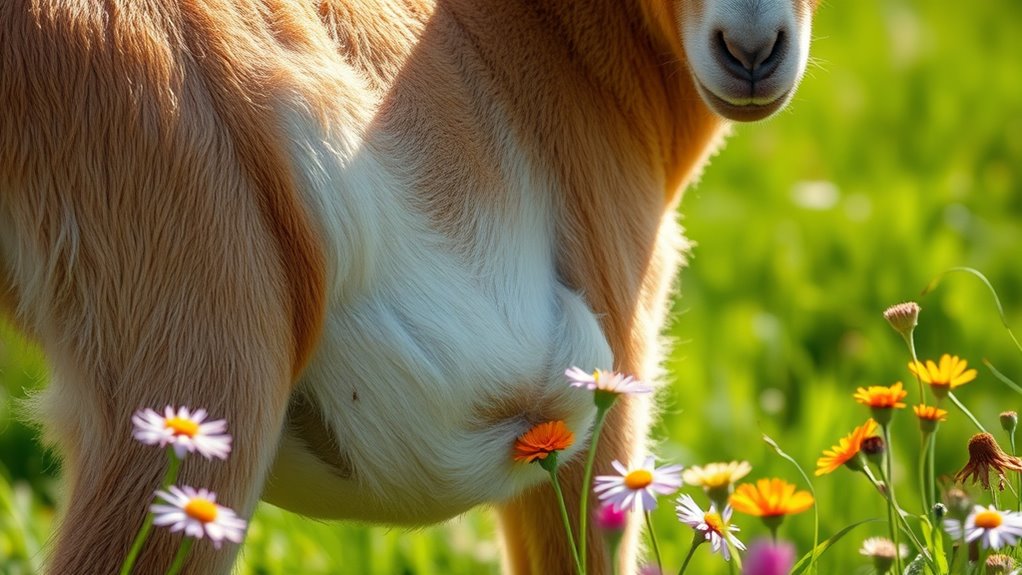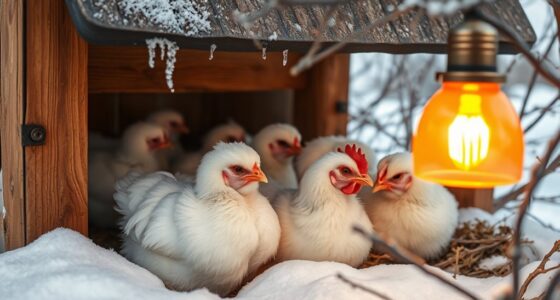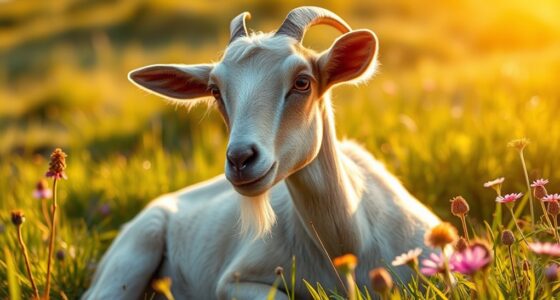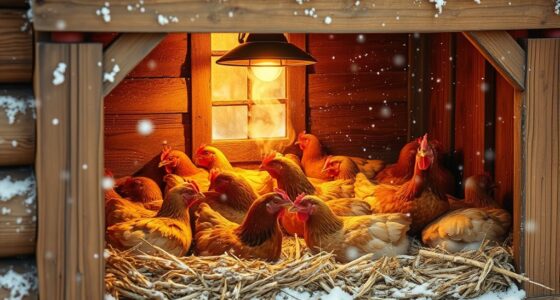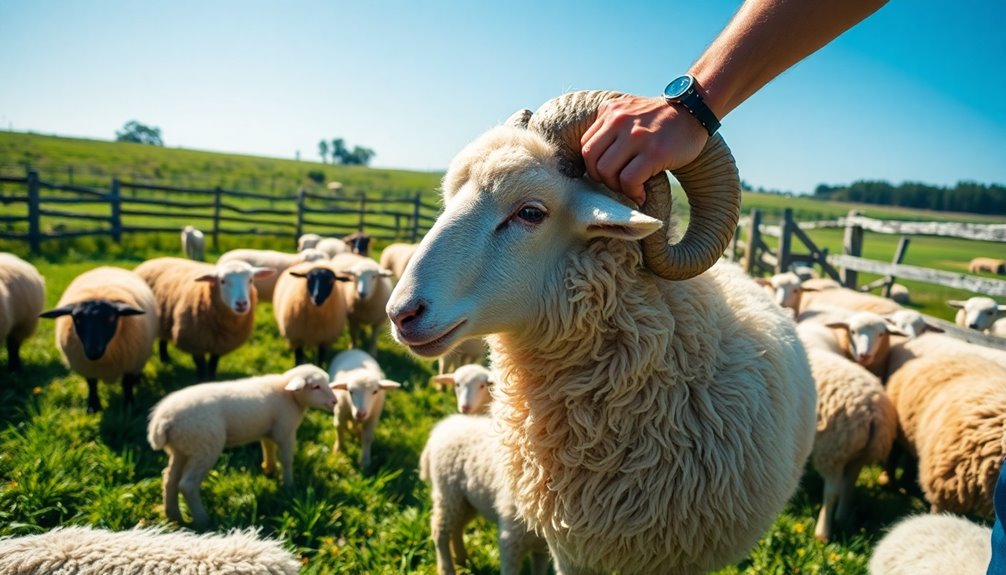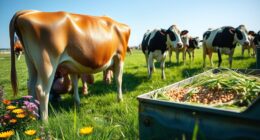Spotting early signs of goat pregnancy is crucial. Look for a failure to return to heat and an increased appetite. You might notice a decrease in milk production if she's being milked. Watch for tummy tightening and udder development, especially in first-time does. Behavioral changes include seeking affection or being more standoffish. As the signs become visible, you'll want to confirm pregnancy methods. Keep an eye out for even more signs and insights on this important journey!
Key Takeaways
- Look for failure to return to heat, as pregnant does will not go into estrus.
- Observe increased appetite due to heightened nutritional needs during pregnancy.
- Check for belly tightening and early udder development in first-time does.
- Monitor for decreased milk production if the doe is currently being milked.
- Note any changes in behavior, such as increased resting or seeking affection.
Early Physical Signs of Pregnancy in Goats
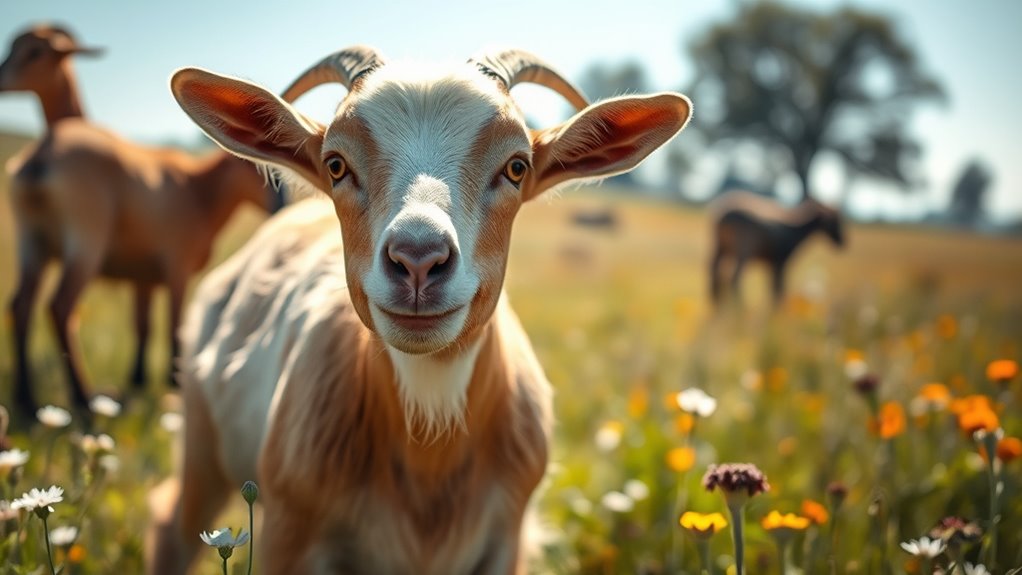
When you suspect a goat might be pregnant, recognizing early physical signs can be crucial. One key indicator is failure to return to heat; a pregnant doe won't go into estrus again.
You might also notice an increased appetite, as she'll need extra nutrients. If you're milking her, watch for a decrease in milk production.
Early on, her belly may tighten before expanding, and first-time does often show udder development.
As her pregnancy progresses, you'll see belly expansion, with possible asymmetrical swelling, especially if she's carrying a single kid.
Keep an eye out for weight gain, too, as that's another telltale sign she's expecting. All these signs can guide you in confirming her pregnancy.
Behavioral Changes to Watch For
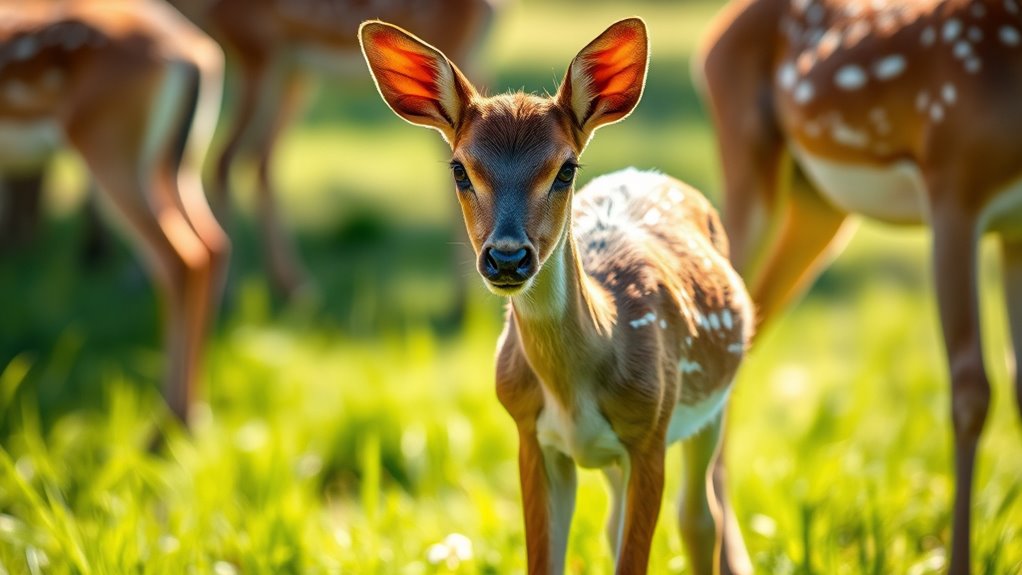
As you monitor a pregnant doe, you'll notice several behavioral changes that can signal her condition. Expect an increase in appetite as her nutritional needs rise.
If she's being milked, you might see a decrease in her milk production. Watch for shifts in social interaction; she may become more standoffish or, conversely, seek affection.
Pregnant does often rest more, snoring frequently and preparing their bedding. You might also notice changes in vocalizations, with more bleating or moaning as labor approaches.
Additionally, her personality may fluctuate, resulting in reduced playfulness and increased affection. Keep an eye on her posture and movements; she may walk with a wider stance as she nears labor.
Diagnostic Methods for Confirming Goat Pregnancy
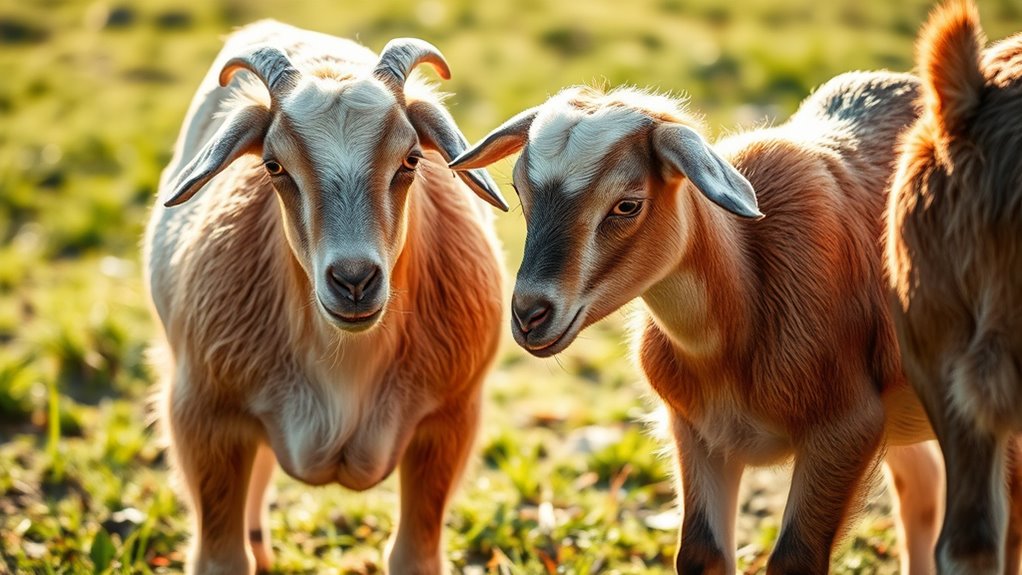
Confirming goat pregnancy is crucial for effective herd management, and several diagnostic methods are available to help you determine a doe's condition.
Ultrasonography, particularly transabdominal and transrectal techniques, allows you to detect pregnancy as early as 20 to 30 days. You can also use the Estrone Sulfate Test or Pregnancy-Specific Protein B (PSPB) testing for confirmation; PSPB is reliable after 25-30 days.
While progesterone testing can indicate non-pregnancy, it's not definitive. Radiography is accurate after day 70 but is less practical due to costs.
Lastly, watch for non-return to estrus and physical changes in the doe, such as belly shape and udder development, to support your findings.
Understanding Pregnancy Duration and Expectations
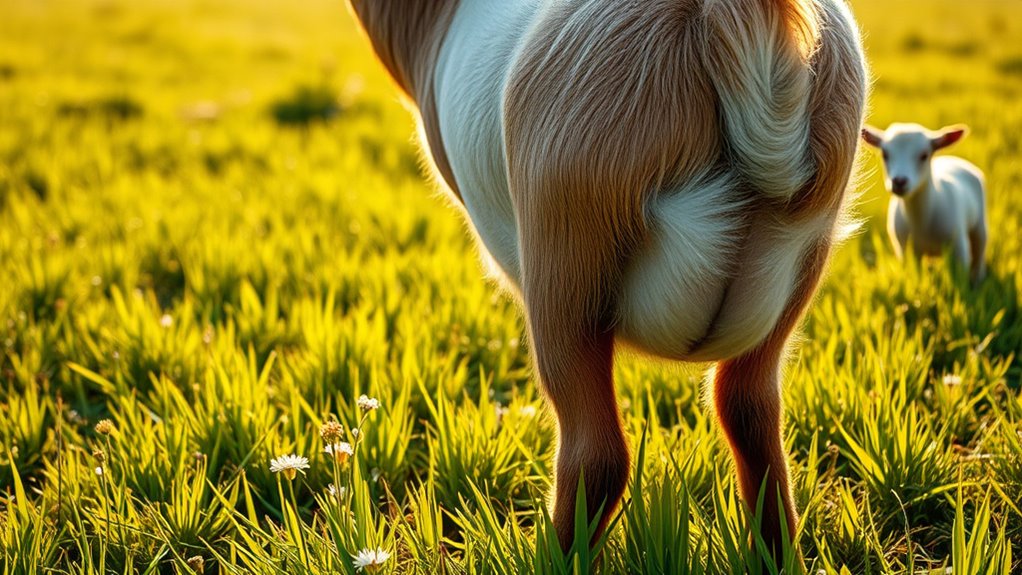
Understanding the duration of goat pregnancy and what to expect can significantly enhance your management practices.
Typically, goat gestation lasts between 145 and 155 days, averaging around 150 days. Factors like breed size, parity, and environmental conditions can influence this duration. Smaller breeds may deliver up to five days earlier.
You'll want to pay close attention to your doe's nutritional needs, especially in the last month, as they crucially affect fetal growth. Be prepared for the possibility of twins or triplets, which increases the risk of pregnancy toxemia.
Regular health checks will help identify any potential issues early on, ensuring your doe stays healthy throughout this critical period.
Recognizing Late Pregnancy and Labor Signs
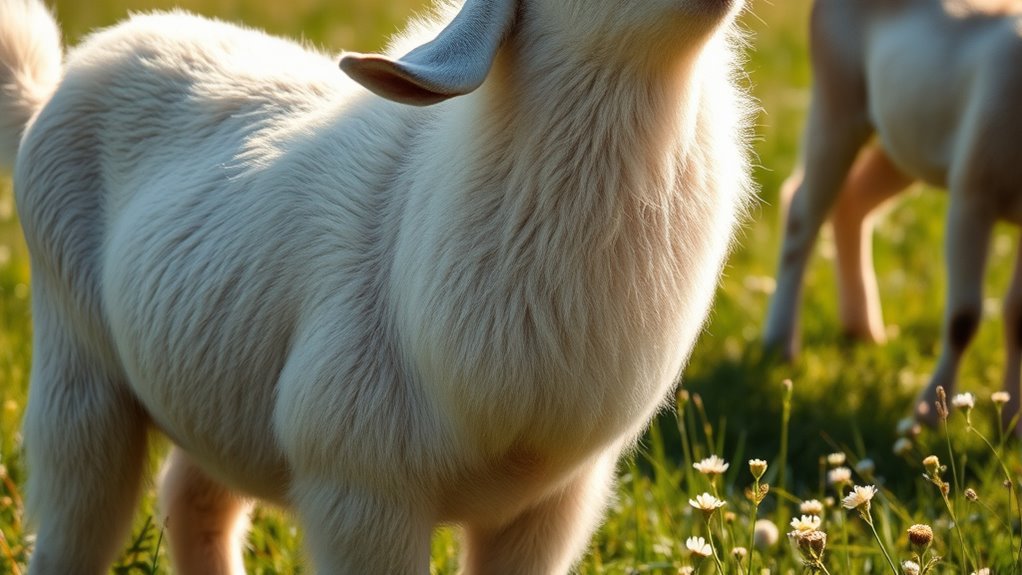
Many goat owners find it crucial to recognize the signs of late pregnancy and impending labor to ensure a safe birthing process.
As your doe approaches labor, you'll notice physical changes like a sunken appearance on her sides and swollen udders. Her behavior may shift, becoming more irritable or withdrawn, while her activity levels decrease due to discomfort.
Look for nesting behavior, tail ligament loosening, and relaxed vulva with clear discharge. Restlessness and separation from the herd signal that labor is near.
During labor, you might observe back arching, pawing at the ground, and heavy breathing. Be prepared for visible contractions and the water breaking, which indicates the kids are on their way.
Frequently Asked Questions
How Can I Differentiate Between Pregnancy and Illness in My Goat?
To differentiate between pregnancy and illness in your goat, observe her appetite, behavior, and physical changes.
If she's eating well, showing signs like barrel swelling or udder development, she might be pregnant.
Conversely, if she's lethargic or has a decreased appetite, illness could be the issue.
Regular vet check-ups and monitoring her body condition will help you identify any potential problems early on.
Keeping records is also beneficial.
What Is the Best Time to Breed My Goat for Optimal Pregnancy?
When the days start getting shorter, you'll notice your goats getting frisky—it's prime breeding season!
The best time to breed your doe is from late summer to early fall, around August to September. This timing ensures that kids are born in the spring when resources are abundant.
Keep an eye on your doe's heat cycle; she'll come into heat every 21 days, with day two being the most favorable for breeding.
Are There Any Specific Breeds With Higher Pregnancy Rates?
Yes, some goat breeds have higher pregnancy rates.
Boer goats are well-known for their high fecundity, often producing twins or triplets.
Kalahari Reds also show impressive reproductive performance, averaging 1.6 kids per doe.
Australian Rangeland does frequently achieve averages of 2.17 kids, while Chappar goats can have a notable twinning percentage.
If you're aiming for better pregnancy rates, consider these breeds for your breeding program.
Can Stress Affect My Goat's Ability to Conceive?
Imagine your favorite doe, once lively and energetic, suddenly becoming withdrawn due to stress.
Yes, stress can significantly affect your goat's ability to conceive. Environmental factors like extreme heat or nutritional deficiencies can disrupt her hormone levels, leading to fertility issues.
For instance, a goat experiencing heat stress might've a shortened gestation or even fail to conceive.
What Should I Feed My Goat During Early Pregnancy?
During early pregnancy, you should focus on providing your goat with high-quality hay or pasture to meet her protein and energy needs.
Ensure she's constant access to fresh water, as her intake may increase.
It's essential to monitor her body condition and avoid overfeeding to prevent complications.
If she's underweight, consider gradual grain supplementation.
Lastly, introduce any dietary changes slowly to keep her digestive system stable and healthy.
Conclusion
As you observe your goats, keep an eye on those subtle changes—the softening of their bellies, the gentle sway of their tails, and the quiet contentment in their eyes. These early signs are nature's whispers of new life. By tuning in to their behaviors and knowing when to seek confirmation, you'll not only embrace the miracle of motherhood but also prepare for the joyful arrival of playful kids dancing in the sunlit pasture.

